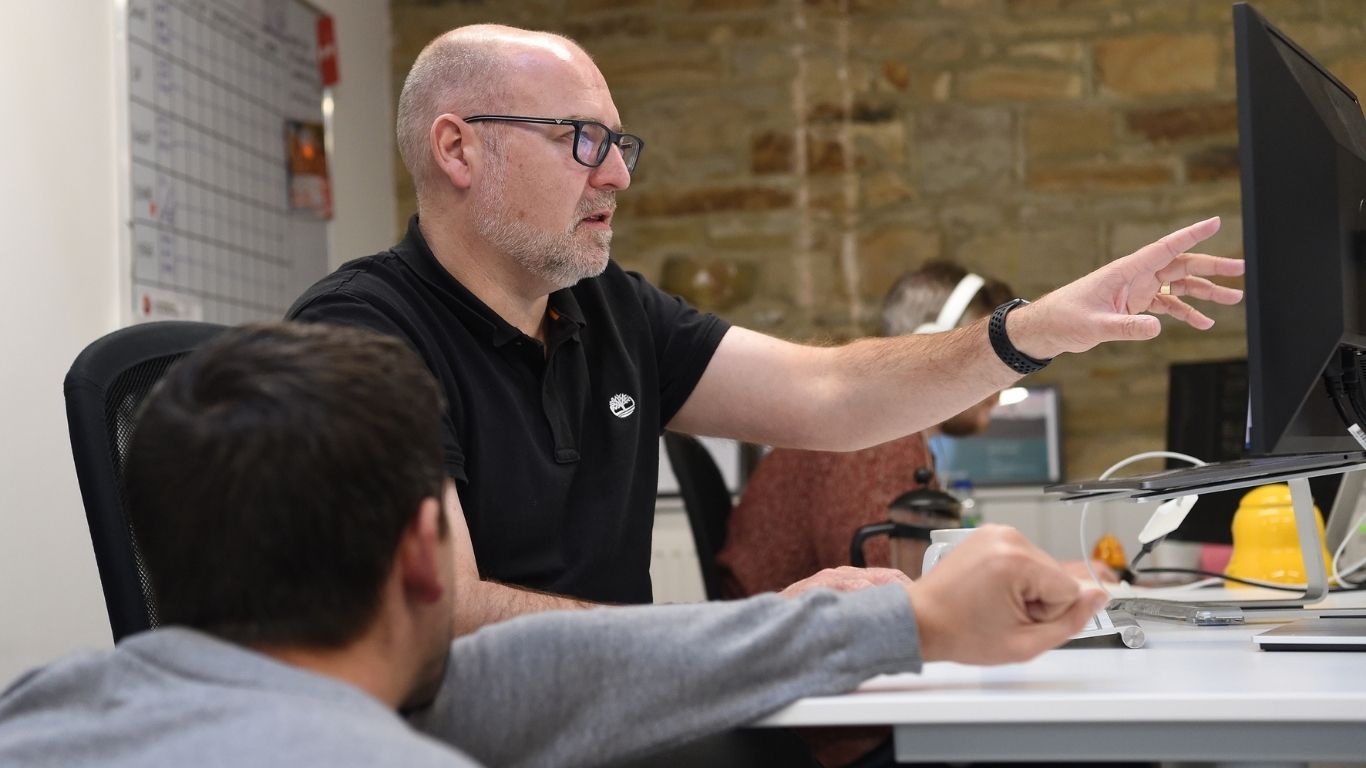Ready to explore the possibilities?
Request a quick call with our team to find out how the Innovation Explorer program can help your business take its next big leap into AI and automation.

Even if your website is failing, you might not need a new one
Despite being a significant capital investment, a new website is often the #1 go-to solution for trouble at t’mill. The client already recognises their business has an ailment and they believe a new website is a remedy especially if a well-meaning web developer says so. But when a business says it needs a new website, it’s not always actually what they need.
New websites are fun, shiny, gorgeous. They exude success. They give everyone in the business a confidence boost. Your team deserves it. And it feels safer, somehow, to start afresh, doesn’t it? Get rid of the issues in one fell swoop?
Do you need a web developer or a digital marketing expert?
Stop right there: these reasons aren’t a business case – you’re in danger of making an emotional purchase! If you have a problem with your website, it’s because your customers have a problem with it. Best focus on uncovering what they want.
Most website failures can be attributed to conversions. The fixes, once identified, could be relatively simple. In short, you can probably achieve your objectives for less money.
I know…. working on the old website isn’t exciting. Just the thought of it seems like an impossible task. But honestly, it’s going to be easier than you think. The fixes, once identified, could be relatively simple. In short, you can probably achieve your objectives for less money. Of course, it’s true that, in some cases, a new website is the only real answer. We’ll get to that later.
If you want to succeed and you want good value for money, let’s do a sense check first. What’s your core problem? Most website failures can be attributed to conversions – not making sales, not generating leads. Identify your actual issue and get help addressing that problem. Your business will be showing symptoms. Here are some common ones.
- Customers are abandoning shopping carts
- Your help desk is busier than it should be
- You don’t get many repeat orders or visits
I recommend documenting your problem – literally writing it down in its simplest form. This is the truth of your situation. This is what you need to ask for help fixing.
Warning: don’t get ahead of yourself by self-diagnosing. You risk taking a wrong turn and repeating the same mistakes on your new site (when it’s time to get one). Self-diagnosis might include statements like:
- Customer journey is all wrong
- Buttons are in the wrong place
- Menus are confusing visitors
Follow the data
I guarantee some of the improvements the data tells you to make will surprise you. This is a common phenomenon with UX testing and Conversion Rate Optimisation. The right changes – the ones that will boost conversions the most – cannot be predicted. Also, you need data to prove your hunches; acting on blind assumption wastes time and money.
While we’re on this topic, I need to ask if you’re sure your website is the real issue, or are you just assuming it is? Simple checks will reveal the culprit. This might hurt, but it’s better to ask these questions now than waste time and money later.
- Do you have a viable product? Does it have value to customers?
- Have you nailed your proposition? Are you telling the right story?
A website cannot solve either of these problems. Digital marketing and SEO will not solve them either. If you’ve got issues with your products or proposition, these need fixing before you make any further investment.
If your product and proposition are sound, we need to find out what’s gone wrong. Because we’re not in the business of assuming, we look at facts. If you allocate budget to testing your site, you’ll soon identify the weak spots. Then it’s only a matter of time before you can work out how to fix it. Perhaps the issues is the copy, or the font, or the hero images, or the menu. It could be the registration form, page load time, mobile experience, front end design aesthetics. It might be anything.
I guarantee some of the improvements the data tells you to make will surprise you. The right changes – the ones that will boost conversions the most – cannot be predicted. You need data to prove your hunches.
Whatever the data shows the problems to be, they can be fixed and your website will start achieving its goals again: more sales, more leads, the opportunity for further growth. You could, for example, do targeted web development work: reskin your site or update clunky back office technology that’s holding it back, if this is what the data says needs to happen. With a programme of testing and improvements, it’s likely that you can work with what you already have and achieve success.
Once you sort out this foundation, you’re ready to start scaling. And, at this point, you could have a sound business case for a new website. At last! The other good news is that all the testing so far – the learning about what works for your customers and what does not? – will inform its design and enable it to hit the ground running.
It’s true that sometimes a website is critically flawed and you certainly will need a new website straight off. If it’s outdated, if the technology won’t support your objectives, if it’s grown into a sprawling, patched labyrinth… Just don’t make the decision based on assumption, emotions, instincts or a yearning for something new and shiny. Make it a rational, informed judgement that gives you the greatest value and the best results.
Key takeaways
- Don’t assume – collate and judge the data
- Avoid an emotional purchase
- Focus on your objectives and ROI
- Check your product
- Check your proposition
- Test, test, test
An agency with a performance marketing team that works closely with its web developers will be able to guide you. That’s us – get in touch.
Photo by Mike Petrucci on Unsplash. This article first appeared on Medium.
-
 01.05.2019|As a strong critic of the hamburger device, I’m pleased to have the opportunity to share results from my latest research that suggest we should abandon it.
01.05.2019|As a strong critic of the hamburger device, I’m pleased to have the opportunity to share results from my latest research that suggest we should abandon it. -
 15.07.2021|What is CRO and why does your business need it? Reduce your CPA and create pages that convert with specialist support.
15.07.2021|What is CRO and why does your business need it? Reduce your CPA and create pages that convert with specialist support. -
 16.09.2021|How poor user experience online impacts your business objectives
16.09.2021|How poor user experience online impacts your business objectives
Door4 opinions and insight.
We have a lot to talk about.Our latest articles, features and ramblings.
We explore performance marketing, AI, communications and optimisation.











